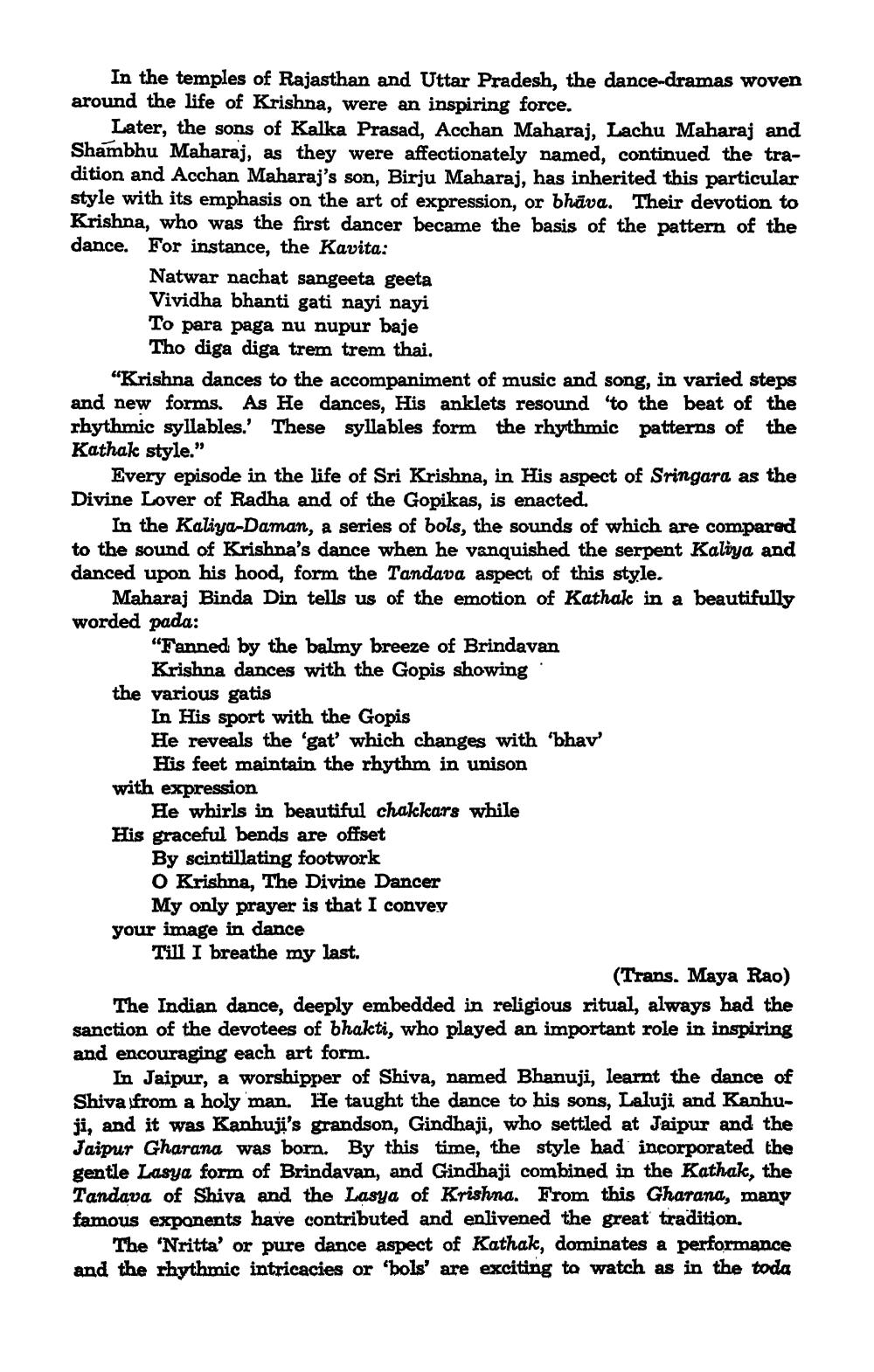________________
In the temples of Rajasthan and Uttar Pradesh, the dance-dramas woven around the life of Krishna, were an inspiring force.
Later, the sons of Kalka Prasad, Acchan Maharaj, Lachu Maharaj and Shambhu Maharaj, as they were affectionately named, continued the tradition and Acchan Maharaj's son, Birju Maharaj, has inherited this particular style with its emphasis on the art of expression, or bhāva. Their devotion to Krishna, who was the first dancer became the basis of the pattern of the dance. For instance, the Kavita:
Natwar nachat sangeeta geeta Vividha bhanti gati nayi nayi To para paga nu nupur baje
Tho diga diga trem trem thai. "Krishna dances to the accompaniment of music and song, in varied steps and new forms. As He dances, His anklets resound 'to the beat of the rhythmic syllables.' These syllables form the rhythmic patterns of the Kathak style."
Every episode in the life of Sri Krishna, in His aspect of Sringara as the Divine Lover of Radha and of the Gopikas, is enacted.
In the Kaliya-Daman, a series of bols, the sounds of which are compared to the sound of Krishna's dance when he vanquished the serpent Kaliya and danced upon his hood, form the Tandava aspect of this style.
Maharaj Binda Din tells us of the emotion of Kathak in a beautifully worded pada:
"Tanned by the balmy breeze of Brindavan
Krishna dances with the Gopis showing the various gatis
In His sport with the Gopis He reveals the 'gat' which changes with 'bhav'
His feet maintain the rhythm in unison with expression
He whirls in beautiful chakkars while His graceful bends are offset
By scintillating footwork O Krishna, The Divine Dancer
My only prayer is that I convey your image in dance Till I breathe my last.
(Trans. Maya Rao) The Indian dance, deeply embedded in religious ritual, always had the sanction of the devotees of bhakti, who played an important role in inspiring and encouraging each art form.
In Jaipur, a worshipper of Shiva, named Bhanuji, learnt the dance of Shiva from a holy man. He taught the dance to his sons, Laluji and Kanhuji, and it was Kanhuji's grandson, Gindhaji, who settled at Jaipur and the Jaipur Gharana was born. By this time, the style had incorporated the gentle Lasya form of Brindavan, and Gindhaji combined in the Kathak, the Tandava of Shiva and the Lasya of Krishna. From this Gharana, man famous exponents have contributed and enlivened the great tradition.
The 'Nritta' or pure dance aspect of Kathak, dominates a performance and the rhythmic intricacies or 'bols' are exciting to watch as in the toda




